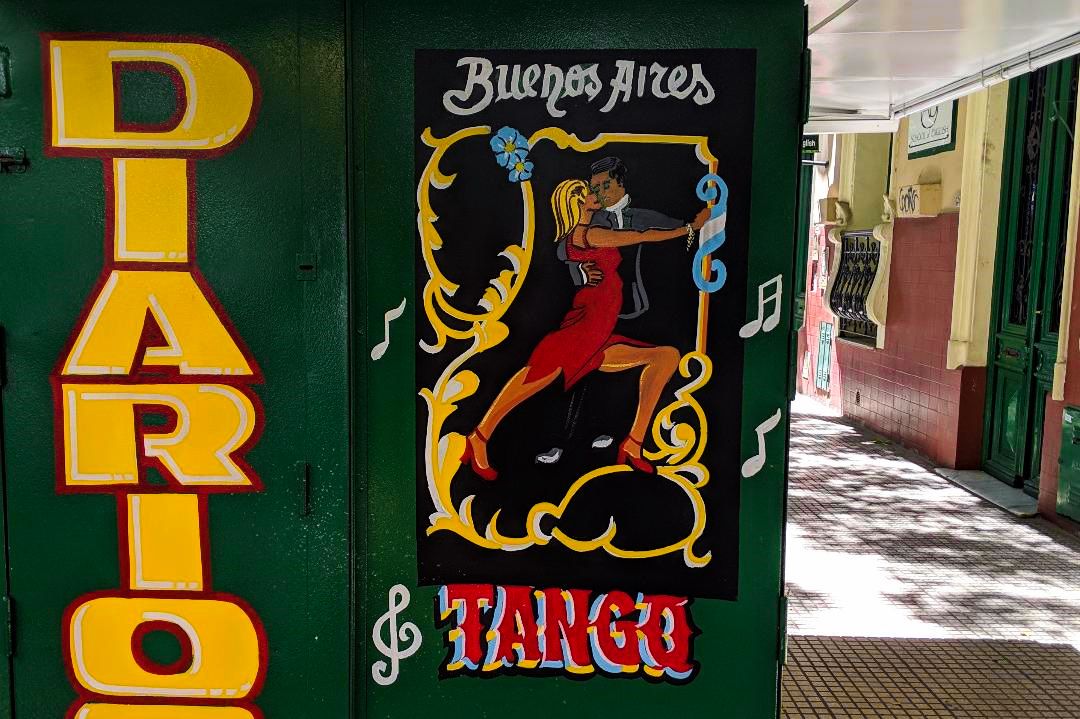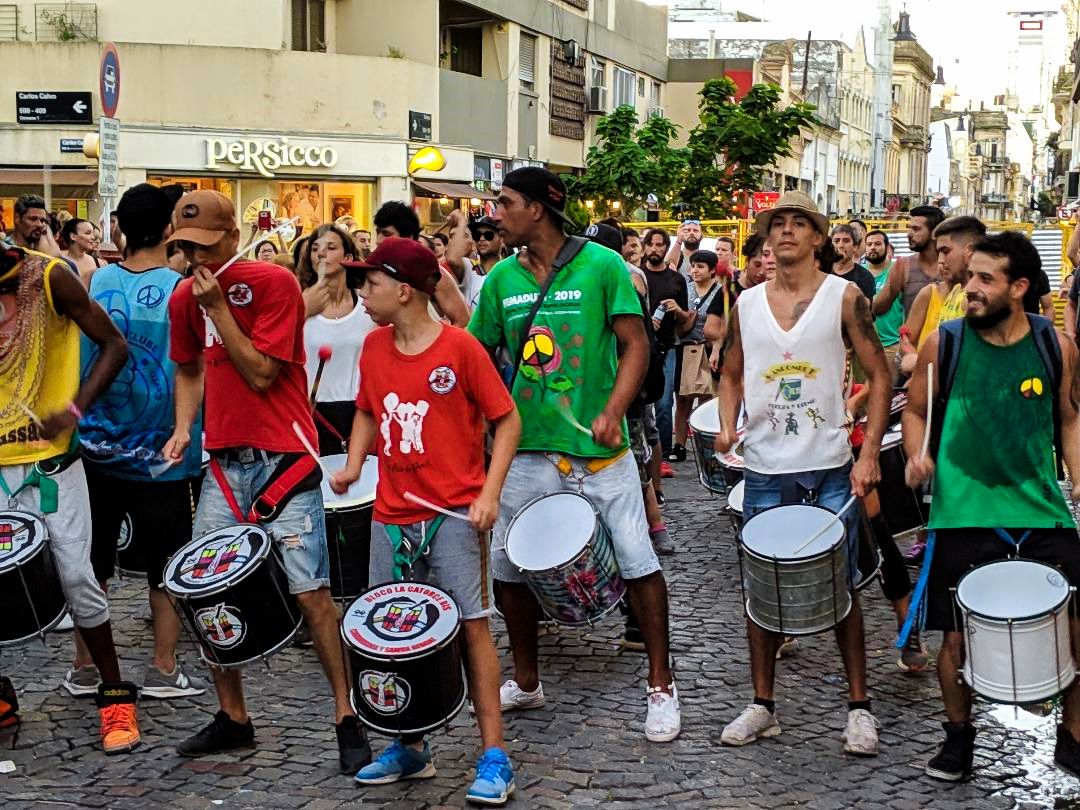By Joe Harris, MA Literatures and Cultures
The Croft Magazine/Joe Harris tells us about his less-than-familiar experience in what is known as most westernised city of South America.
In January, with the bleak remnants of festive memory rapidly fading, I sat down on the edge of my bed, fatigued, and just stopped to think for a minute. At that point, I was spending 45 hours of my week working at a job that was nothing more than a post-grad source of income. That minute soon turned into a moment of revolution, once satisfied with my bank balance and convinced by what my laptop screen was telling me, and so it was time to initiate ‘Gap-Yah’ Volume Two: This Time it’s Latin'.
The next morning, I handed in my notice and informed my manager that I had booked flights to South America and would therefore be leaving the job. A month later, I boarded the plane and left a fog-carpeted London behind.
Argentina was to be the front door of my trip and Buenos Aires the colourful welcome mat. Though typically thought of as ‘the most Westernised city of South America’ reiterated by some of my friends and family who had travelled there previously, its sheer vibrancy and Hispanic sensuality cannot be equalled by any city that I have ever visited in South America, let alone 'the West'.
Its colonial Spanish past remains present in much of the city’s architecture. As you meander down the cobbled streets of San Telmo, an old district in the East of the city, a constant tremor of Latin guitar on vinyl tickles your ear and a tide of warm breeze floats in from the Rio de la Plata, that’s how you know you’re at the heart of the world’s passion. Buenos Aires is a feast for the senses, but you do not need eyes to see its colour. You can feel it.
Having only spent five days in this vast and bustling capital, you would not be blamed for thinking that my scope of the city is limited; but from my short time there I could easily write ten, twenty, thirty articles. I could write about the street-art scene of Palermo. I could recount the evening protest marches along Avenida Roque Sáenz Peña, or the reasons that restaurants write their prices on laminated menus with felt-tip pens. However, I have decided to focus on one particular evening of my short stay: one that truly summed up the palpable soul of the city and, fittingly, my last goodbye to Buenos Aires.
It was a typical February evening: still warm with a cloudless pink sky as the sun began to descend over San Telmo. It was around 7.30pm and I had just closed the door on an understated, but nevertheless delicious, Mexican restaurant by the canal on the periphery of the old town, away from the towering skyscrapers.
Anyway, as I sauntered down the pavement, a thin veil of sweat on my forehead under a faint haze of parrilla smoke, street sellers packed away the dregs of antique knives and dusty jazz records. The weekly market had flooded the barrio since the early hours, as it did each and every Sunday, drawing hordes of tourists with its famous reputation as a window to the past: ignoring the numerous tables of vaping paraphernalia that is.
I have decided to focus on one particular evening of my short stay: one that truly summed up the palpable soul of the city and, fittingly, my last goodbye to Buenos Aires.
Turning a corner, I felt a deep vibration and the thudding of drums. Having initially planned on heading back to my hostel, I decided to follow the sound that was getting ever-louder. I turned another corner and spotted a sprawling crowd of people at the other end of the avenue. Intrigued, I made my approach - my chest pounding harder with each step.
Upon reaching the crowd, I managed to wriggle my way through so that I could see now who was responsible for the commotion. Of course! I had failed to put two and two together. A booming tangle of people and drums in a Latin American metropolis: it’s a carnival march. But it wasn’t quite how I imagined. When I thought of carnival, images of flamboyant costumes and organised feathered dancers flashed across my mind. This, was completely different. It was much simpler: local people, of all ages, gathering together in their barrio to get down to some sexy samba beats.

It was spontaneous, and it worked magically - I couldn’t take my eyes away. Although not quite able to summon up the courage and join in, being my awkward and gangly self, my eyes were fixed upon the dozens of men, women and children moving their anaconda hips like it was nothing. They were lost to the rhythm and the celebration. The drummers were dripping with sweat. They had clearly been doing it for hours, moving up and down the street, bottles of Quilmes lager in hand. It was a mini samba festival, a style of dance and music rooted in Brazilian culture.
By around 9 o clock, the procession had reached its final destination: Plaza Dorrego, where it would party into the early hours. By this point, savvy street-sellers had begun to roam around, overflowing party participants’ cups with rum and various mixers - not for the children, of course - and were, I’m sure, making a tidy profit.
I then noticed that there seemed to be something else happening on the other side of the square.
Glimmers of a Latin guitar filtered through beat of the drums. Escaping the sweat, I edged away from the crowd, across tiles that together with my flip-flops worked to create their own beat. It soon became clear that my ears had not deceived me. Closing in on the other side, the twang of fiery Argentine strings captured me. It was another dance, but this was no carnival. This was a Milonga.

A Milonga is a dance event born in the Rio de la Plata areas of Argentina and Uruguay, at which Milungueros (dancers) come together to perform the Tango and other Latin American styles of movement. Although similar in size to the carnival procession, it seemed to be somewhat more structured. Where the carnival manifested itself as a great big free-for-all, the Milonga has a clearly defined dance-floor: a square area, about the size of a badminton court. It happens every Sunday night, once the market has finished. Like its neighbouring carnival, the Milonga drew crowds of every demographic: young men, older women, professional dancers, and amateurs alike. People seemed to leave their identities, and the complications that came with them, with their bags at the side and enter the dance as a different person.
The Tango itself was awe-inspiring. I had honestly never witnessed something so expressive and passionate. I had never seen limbs move with such fluidity and elegance, nor hips touch with such intimacy. It enchanted me entirely, rooting my feet to the floor and my eyes to the feet before mine. The desire to take part was unbearable. Watching these beautiful dancers under strings of glistening fairy lights, had me wishing my parents had made me take tango classes as a child. One season’s viewing of Strictly under my belt did not meet the required experience.
Who cared if they had work in the morning? There was no clock-watching, nor anxieties about who paired with whom: only a shared love for dance.
The most fascinating thing was that the people taking part, though complete strangers, danced like they were life-long friends: no awkwardness, nor embarrassment.
It felt a million miles away from a Sunday night back home, and something that could only happen in Buenos Aires. Who cared if they had work in the morning? There was no clock-watching, nor anxieties about who paired with whom: only a shared love for dance. It felt human. I stepped back into the centre of the plaza, with the carnival on one side of me and the Milonga on the other, kids playing in the middle and dogs trotting around them seeking food and affection, and I just stood there, soaking up the passion.
This encapsulated the heart of Argentina, and the soul of Buenos Aires: a city of colour and vibrancy like no other. I simply cannot imagine a scene like this in mainland Europe, let alone Britain. Honestly, it’s a shame. If there were, maybe our country wouldn’t be quite so divided. Maybe it’s British awkwardness. Maybe we lack the unconditional acceptance of others. The sense of community I witnessed that evening was like nothing I had ever seen in my twenty-three years of life.
Now, when people ask me about the most westernised city of South America, with the nostalgic hum of strings and drums still ringing in my ears, I will tell them that there’s a hell of a lot more to Buenos Aires than the architecture.
Featured image: Joe Harris / Epigram
Find a copy of The Croft Magazine inside every edition of Epigram!









